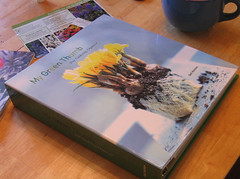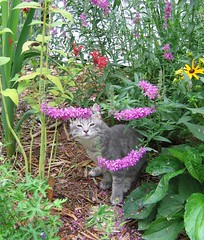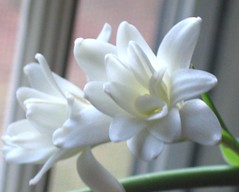My mother has lovely hands, with long tapered fingers and narrow nails, but mine show no family resemblance. My hands are ugly, fat, and short. Years of piano playing did nothing to lengthen my stubby digits. My short, wide nailbeds make my fingers look even shorter. Growing my nails long does not help because they grow out in an unattractive fan shape, requiring constant filing upkeep.
I don’t dress up my crab-like hands. I avoid rings (except my wedding ring) because they only accentuate the squatness of my fingers. Bracelets are similarly outlawed. My wrists are slender, but the jewelry draws unnecessary attention to my ungraceful paws. Careful manicures, while they do elongate my fingers, are too much upkeep. I discarded them when I began swimming regularly and continued to eschew them through my time in the military and now as a handywoman/gardener.
We tend to take very little care of the things we dislike. I find that is true of my hands. They are covered in scratches, as a result of me playing “paws” (or “claws”) with the kitties. My nails are raggedly cut short and my overactive cuticles are creeping toward their tips. You won’t find me slathering Crème de la Mer on my hands, but some lotion is necessary. I’m a compulsive hand washer and the antibacterial soap at my workplace is quite drying. I use cheap, but nicely scented lotion, to take the edge off of handling paper with sere fingers. Come winter, though, my hands need more than the usual perfunctory care.
Growing up in the humid PNW, I had no concept of dry winter air. My first winter in Virginia, at officer boot camp, was shockingly dry and cold. Constant exposure to the dry air and no time for pampering dried and cracked my cuticles. They bled each time I performed rifle manual, causing even my hardened sergeant instructors to grimace in disgust. My mother (she of the beautiful hands) sent me Neutrogena Hand Cream and cotton gloves to sleep in. My hands were saved.
This winter, my hands again show signs of the season’s mercilessly dry air. My cuticles are not affected this time. Instead, my knuckles reddened, cracked, and became sensitive to the point where it pained me to reach into my bag to grab my keys. I shopped for the Neutrogena lotion but it had sold out. Reluctant to purchase anything new, I went through the arsenal of half-empty tubes and samples in my bathroom. My hands were greasy and smelled nice, but my knuckles only became more raw. At last, I was desperate enough to buy a new product. This is what I impulsively bought:
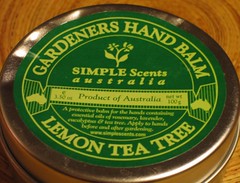
This is simply a miracle balm. My knuckles were healed after two applications. I now put it on each morning before pulling on my gloves and leaving the house and each night before bed. (I use my cheapo lotions during the day at work.) I no longer cringe when I reach into my purse or dry my hands with rough paper towels. The balm is intended for use before and after gardening, but I now find it indispensable for the winter as well. My hands may be graceless, but they don’t hurt.
I’ll give you an updated review this summer on how well it protects against the ravages of clay dirt.
(If the picture does not display, the product is Lemon Tea Tree Gardeners Hand Balm, by Simple Scents Australia.)
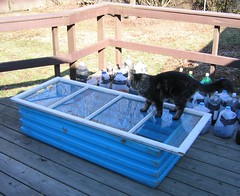 I’m a ghetto princess and this is my ghetto cold frame. It’s comprised of the top of an industrial waste container (unused) and an old window. My neighbor donated the container top and I bought the window at Building Value. While I doubt the plastic and glass have much in the way of insulating properties, they do keep the frost off, which is all a cold frame really must do this time of year.
I’m a ghetto princess and this is my ghetto cold frame. It’s comprised of the top of an industrial waste container (unused) and an old window. My neighbor donated the container top and I bought the window at Building Value. While I doubt the plastic and glass have much in the way of insulating properties, they do keep the frost off, which is all a cold frame really must do this time of year.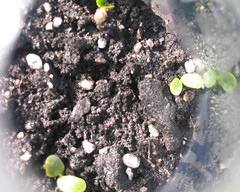
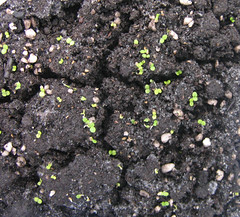
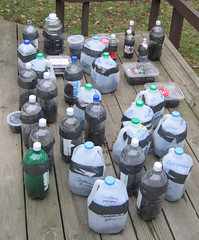
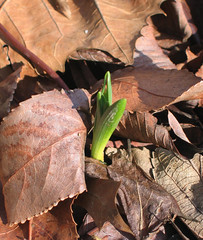 Don
Don
